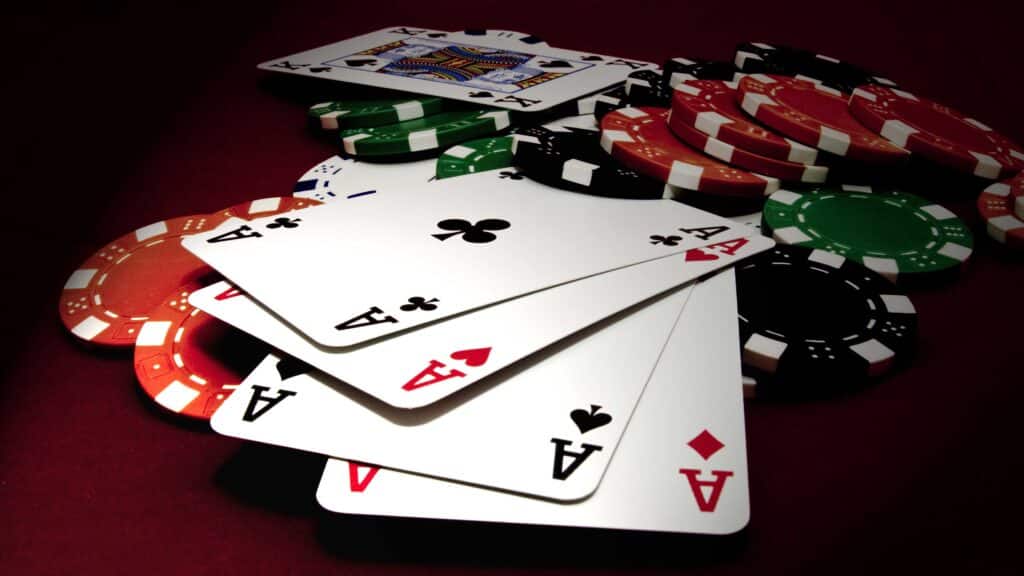One of the most crucial skills that every poker player must master is balancing their range. In online poker, this concept is paramount for both beginners and seasoned players. By learning how to balance your range, you ensure that you're unpredictable, making it difficult for opponents to read your moves. Whether you are playing cash games or tournaments, the ability to mix up your play and keep your opponents guessing can lead to long-term success. This article dives deep into the concept of balancing your range, why it’s important, and how you can apply it in your online poker strategy.
What Does "Balancing Your Range" Mean in Poker?
In poker, your "range" refers to the set of hands that you might have in a given situation. For example, if you're playing a hand and raise pre-flop, your range could consist of strong hands like Aces and Kings, medium hands like 10-J or suited connectors, and even weaker hands like small pocket pairs or suited aces.
Balancing your range means playing a mix of hands in such a way that it’s difficult for your opponents to know what you are holding at any given moment. If you consistently play only strong hands or always bluff when you raise, savvy opponents will catch on and adjust their strategy against you. By balancing your range, you keep opponents guessing, which makes it harder for them to exploit you.
Why is Balancing Your Range Important?
Balancing your range is key to becoming a successful poker player. If you're always betting strong hands and folding the weak ones, your opponents will quickly learn to fold when you bet aggressively and only call when you’re weak. This predictability can lead to losing money over time as skilled opponents can exploit your strategy.
On the other hand, by mixing in bluffs, semi-bluffs, and even occasional overbets, you make it difficult for your opponents to discern your hand strength. The key is to strike the right balance. A perfectly balanced range involves playing both strong hands and weak hands, making it harder for your opponents to identify whether you are bluffing or holding a monster hand.
Building a Balanced Range: How to Get Started
Now that you understand the importance of balancing your range, let’s dive into how you can apply it to your poker strategy. The first step in balancing your range is determining what hands to play in each situation. A balanced strategy takes into account position, stack sizes, and the tendencies of your opponents. Let’s break down these factors in detail.
1. Understand Your Position at the Table
Position is one of the most important factors in online poker. Your position refers to where you sit in relation to the dealer. The players who act last in a betting round have an advantage because they get to see what their opponents do before making a decision.
In early position (i.e., when you are one of the first players to act), you should tighten up your range. You want to play stronger hands here because there are more players yet to act, and there’s a higher chance that someone will have a better hand than yours. Hands like pocket Aces, Kings, Queens, or Ace-King are ideal for early position.
As you move towards later positions, your range should widen. In late position, you can afford to play a broader variety of hands, including suited connectors, small pairs, and weaker offsuit hands. This flexibility allows you to exploit weak players who have folded their strong hands in early position.
2. Adjust for Stack Sizes
Stack size is another critical element in balancing your range. A large stack size allows you to be more aggressive with your bets because you can afford to take more risks. Conversely, a short stack requires more caution as losing a hand would leave you with limited chips to continue the game.
When you have a deep stack (many chips relative to the blinds), you can open up your range and play more hands. Players with deep stacks are more likely to make post-flop plays and take risks on the turn and river, so having a balanced range is essential to avoid being exploited by skilled players.
With a short stack, however, you should tighten your range and focus more on hands that have the potential to make strong post-flop hands. For example, pocket pairs or suited connectors work better in these situations as you need to maximize your chances of hitting a big hand on the flop.
3. Vary Your Pre-Flop Range
One of the easiest ways to balance your range is by varying your pre-flop actions. If you always raise with the same hands, your opponents will start to recognize patterns in your play. To combat this, you need to mix up your range by occasionally folding strong hands and raising with weaker hands.
For example, imagine you're playing in the late position with a hand like 8-7 suited. You might occasionally raise with this hand to take advantage of your position. Conversely, you might occasionally fold pocket Jacks, a hand that is usually worth raising with. By doing so, you make it harder for your opponents to know whether you’re holding a strong hand or a weak one.
Balancing Your Post-Flop Play
Once you’ve mastered pre-flop play, balancing your range on the flop, turn, and river becomes essential. Just like pre-flop, if you consistently play only strong hands or always bet aggressively, your opponents will be able to read your actions and exploit your predictability. Here's how you can balance your post-flop range:
1. Mix in Bluffing and Semi-Bluffing
Bluffing is an essential tool in any poker player's arsenal. However, it’s crucial to balance your bluffs with value bets. If you bluff too much, your opponents will call you more often, and you’ll lose money in the long run. On the other hand, if you never bluff, your opponents will always fold to your strong hands, and you won’t get value from your bets.
One way to balance your post-flop range is through semi-bluffing. A semi-bluff is when you bet or raise with a hand that is not yet the best hand but has the potential to improve. For example, a straight or flush draw is an ideal candidate for a semi-bluff because it can win in two ways: by forcing your opponent to fold or by hitting your draw on the next card.
2. Adjust Your Bet Sizing
Bet sizing is another tool you can use to balance your range. If you always bet the same amount in every situation, your opponents will quickly pick up on your patterns and adjust accordingly. To counter this, mix up your bet sizes based on the strength of your hand and the situation at the table.
For example, if you have a very strong hand like top set (three of a kind) on the flop, you might want to make a larger bet to extract as much value as possible. On the other hand, if you’re bluffing or have a marginal hand, you may choose to bet smaller to avoid committing too many chips when your opponent might have a better hand.
Common Mistakes in Balancing Your Range
Even experienced players make mistakes when balancing their ranges. Here are some of the most common errors to watch out for:
1. Over-Bluffing
While bluffing is a key component of balancing your range, overdoing it can be disastrous. If you bluff too often, your opponents will catch on and start calling you more frequently. Over-bluffing can quickly deplete your stack, especially if you’re facing tight players who are willing to fold weak hands.
2. Under-Bluffing
On the flip side, under-bluffing is another mistake that players make. If you never bluff, your opponents will easily recognize that you only bet strong hands. This predictability can be exploited by skilled players who will fold their weaker hands and only call when they have you beat.
3. Failing to Adjust to Opponents
Balancing your range is important, but it’s equally crucial to adjust your strategy based on the type of opponents you’re facing. If you're up against a tight player who only plays premium hands, you might want to loosen up and bluff more frequently. On the other hand, if you're playing against a loose player who bluffs often, you may need to tighten up and avoid calling their bluffs.
Conclusion: Mastering Range Balancing for Long-Term Success
Balancing your range is one of the most important skills to develop as an online poker player. By mixing up your play, adjusting based on position, stack size, and opponent tendencies, you’ll make it harder for others to read your hand. This unpredictability is the key to maintaining an edge over your opponents and securing long-term success at the poker table.
Remember, the goal is to always keep your opponents guessing. Whether you're bluffing, semi-bluffing, or playing a strong hand, your actions should never be too predictable. With practice, patience, and a solid understanding of how to balance your range, you’ll elevate your poker game to the next level.



